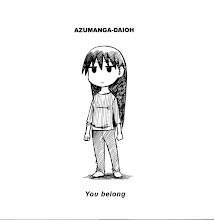And you thought there is never a girl online? (ネトゲの嫁は女の子じゃないと思った?) is a 12 episode slice of life romance based on the light novel series of the same name written by Kineko Shibai and illustrated by Hisasi. The series aired in Japan on TV over the Spring of 2016.
Nishimura Hideki plays a popular fantasy MMORPG called Legendary Age. The healer in his current party falls in love in-game but Nishimura was burned before when he confessed his love to an older party member to find out she was a he. The healer relents until he gives in, still not totally convinced she is really a she. The leader of the party suggest a meeting off line to confirm everyone's gender. Much to Nishimura's shock the other three members are females and go to his school.
The healer, who has fallen in love with his online persona has a hard time distinguishing between the game and reality. Her affectionate attitude spills over into the real world, causing problems for Nishimura and the other party members in school. Fearing the worst they embark on a mission to prove to her that there is a clear difference between them, in order to arrest any misapprehensions and potential issues.
There is a lot of 'plot' in this series, a whole bunch of it. The artwork is sub-par, but fitting. The character designs are bad. but fitting. In general this series is rather dull and mid grade fan-service MMORPG garbage. There are moments when it has a touching side but those moments are fleeting and quickly get washed away in all of the 'plot'.
The writing is typical of LN's aimed at the current crop of 2d over 3d otaku guys. What school romance would be with out a trip to the beach, bathing scenes or the school festival? The idea and implementation of the characters efforts to help their party member break out of her dangerous illusions with the game are decent. Unfortunately they are mostly dropped half way through and the show instead focuses more on being about them playing the MMORPG above anything else.
It was streamed via Crunchyroll, I'm sure there will be a video release at some point, given the large fanbase its aimed at. It is rather sub-par over all though.
Nishimura Hideki plays a popular fantasy MMORPG called Legendary Age. The healer in his current party falls in love in-game but Nishimura was burned before when he confessed his love to an older party member to find out she was a he. The healer relents until he gives in, still not totally convinced she is really a she. The leader of the party suggest a meeting off line to confirm everyone's gender. Much to Nishimura's shock the other three members are females and go to his school.
The healer, who has fallen in love with his online persona has a hard time distinguishing between the game and reality. Her affectionate attitude spills over into the real world, causing problems for Nishimura and the other party members in school. Fearing the worst they embark on a mission to prove to her that there is a clear difference between them, in order to arrest any misapprehensions and potential issues.
There is a lot of 'plot' in this series, a whole bunch of it. The artwork is sub-par, but fitting. The character designs are bad. but fitting. In general this series is rather dull and mid grade fan-service MMORPG garbage. There are moments when it has a touching side but those moments are fleeting and quickly get washed away in all of the 'plot'.
The writing is typical of LN's aimed at the current crop of 2d over 3d otaku guys. What school romance would be with out a trip to the beach, bathing scenes or the school festival? The idea and implementation of the characters efforts to help their party member break out of her dangerous illusions with the game are decent. Unfortunately they are mostly dropped half way through and the show instead focuses more on being about them playing the MMORPG above anything else.
It was streamed via Crunchyroll, I'm sure there will be a video release at some point, given the large fanbase its aimed at. It is rather sub-par over all though.


























































